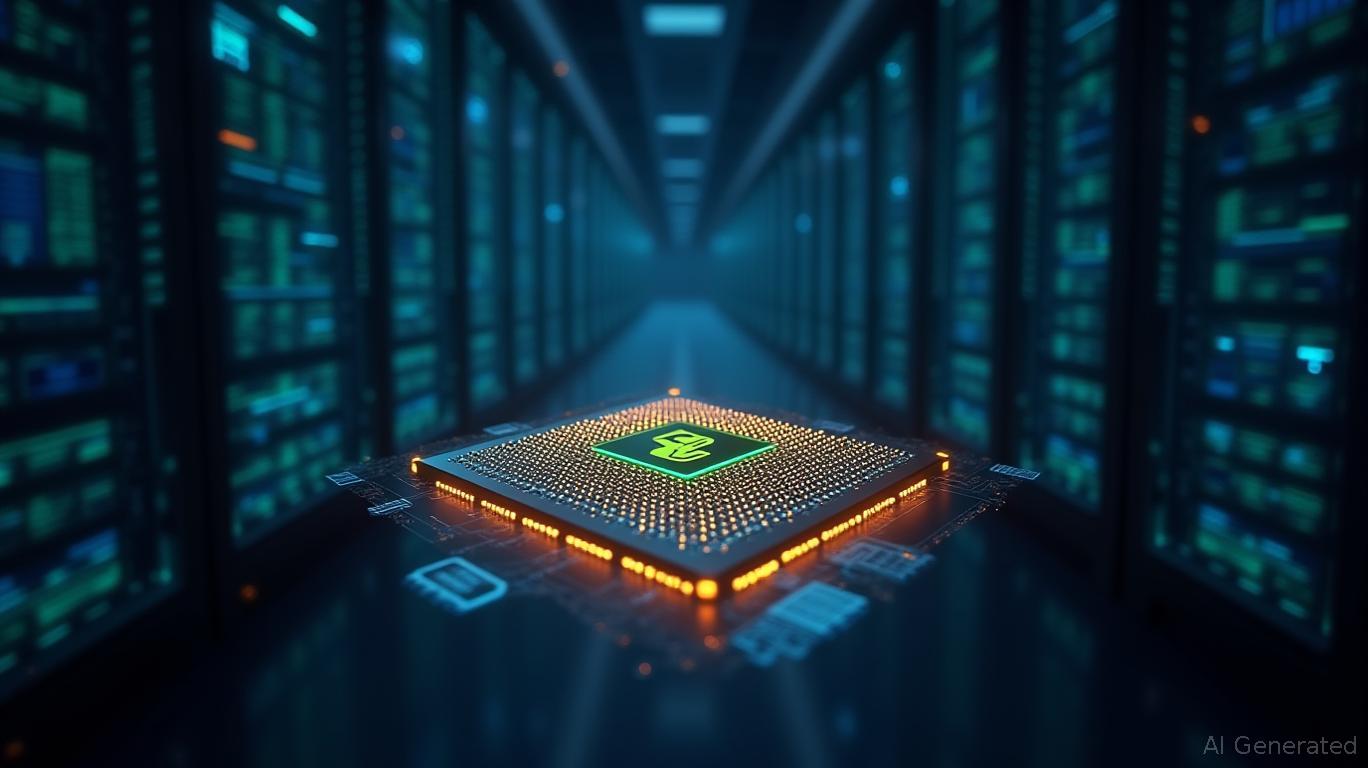NVIDIA's Unrivaled AI Infrastructure: A Fortress Built on Dominance and Innovation

NVIDIA's (NASDAQ: NVDA) stranglehold on the AI compute market has reached unprecedented heights, with its GPUs powering over 90% of global data center AI workloads as of Q2 2025. This dominance, fueled by a combination of hardware innovation, ecosystem lock-in, and strategic bets on AI-as-a-service, has made
the linchpin of the $10 trillion generative AI economy. Yet, recent insider selling by top executives has sparked debates about whether the company's valuation—a P/S ratio of 42x—has outpaced fundamentals. Let's dissect NVIDIA's moat, its threats, and what this means for investors.The AI Infrastructure Monopoly
NVIDIA's market share in the AI GPU sector stands at 92%, a near-monopoly by any standard. This is no accident. The company's CUDA ecosystem, now used by 30 million developers, creates insurmountable switching costs for enterprises. Pair this with its hardware leadership—such as the H100 and upcoming GB200 GPUs—and a full-stack offering (CPUs like Grace, DPUs like BlueField, and the DGX Cloud platform)—and you have a vertically integrated fortress.
The DGX Cloud, NVIDIA's AI-as-a-service platform, is another key lever. By partnering with AWS and
Azure, it's democratizing access to its hardware while addressing data sovereignty concerns through regional compute hubs like DGX Cloud Lepton. This hybrid model ensures enterprises can scale AI workloads without owning physical GPUs, locking them deeper into NVIDIA's ecosystem.Competing in the Shadow of NVIDIA
While NVIDIA's dominance is clear, rivals are nibbling at the edges. AMD's MI300X GPUs, paired with its ROCm software, now claim 4% of the data center AI market—a jump from 3% in 2024. Its MI400 series, with 19.6 TB/s bandwidth, aims to challenge NVIDIA in cost-sensitive inference tasks. Meanwhile, China's DeepSeek is eroding demand for high-end GPUs with its R1 chip, which slashes inference costs by 30–50%.
Yet, these competitors face steep hurdles. AMD's delayed RDNA 4 GPUs and U.S. export restrictions (costing it up to $1.5 billion annually in lost sales to China) limit its growth. Intel's AI chips, like the failed Battlemage B-series, remain irrelevant, while geopolitical fragmentation risks splintering the market into regional ecosystems.
The Insider Sell-Off: Cause for Concern or a Distraction?
NVIDIA's executives have sold $454 million in shares in Q2 2025 alone, including CEO Jensen Huang's $20 million June sale. This has spooked some investors, but the data tells a different story.
- Compensation Mechanics: Executives often sell shares to cover taxes on vested RSUs. CFO Colette Kress's $913 million sale in March 2025, for instance, stemmed from a massive RSU vesting event.
- Rule 10b5-1 Plans: Most sales were pre-arranged, meaning they weren't based on insider knowledge. Huang still holds 860 million shares—less than 1% of his stake.
- Stock Performance: Despite the selling, NVIDIA's stock rose 18% YTD in 2025, hitting $156.18 as of June 2025. Institutional buyers added $70 billion in net purchases in Q1, with firms like Renaissance Technologies and doubling down.
The takeaway? Insider selling is a distraction. NVIDIA's $53.5 billion cash hoard and $50 billion buyback plan ensure stability, while its AI-driven revenue growth (up 154% YoY to $26.3 billion in Q2) justifies its premium.
Investment Outlook: The Generational Play with Risks
Bulls see NVIDIA as a generational monopoly, akin to Microsoft in the 1990s. Its AI infrastructure is irreplaceable for hyperscalers like Meta and
, and its DGX Cloud could generate recurring revenue for decades. Analysts predict 57% revenue growth in 2025, with AI training demand alone driving $40 billion in annual GPU sales by 2027.Bears, however, point to valuation risks. A reversion to a 25x P/S ratio (its 10-year average) would slash the stock to ~$60—a 60% drop. Geopolitical risks, like China's push for AI self-reliance, and competition from AMD/DeepSeek could also weaken margins.
Investment Thesis:
- Aggressive Investors: Buy dips below $150, targeting the $171 consensus price target (45% upside). Monitor DGX Cloud adoption and geopolitical developments.
- Conservative Investors: Wait for a 20–30% correction or signs of slowing AI demand. NVIDIA's data center revenue growth has already slowed to 35% in 2025 from 100% in 2023.
- Hold for the Long Term: NVIDIA's AI moat is unmatched. While valuation is rich, the $10 trillion AI market justifies its premium—if it can sustain leadership.
Final Verdict
NVIDIA's AI infrastructure is the bedrock of the next tech revolution. While insider selling and overvaluation fears are valid concerns, the company's ecosystem dominance and cash-rich balance sheet make it a buy for long-term portfolios. For bulls, the question isn't whether NVIDIA will stumble—it's whether the world's AI needs can grow fast enough to justify its price tag.
NVIDIA: The AI Monolith, but at What Cost?
Sign up for free to continue reading
By continuing, I agree to the
Market Data Terms of Service and Privacy Statement

Comments
No comments yet